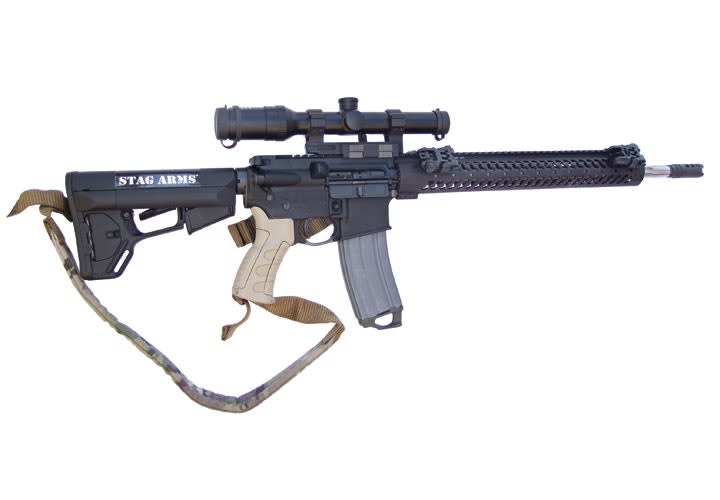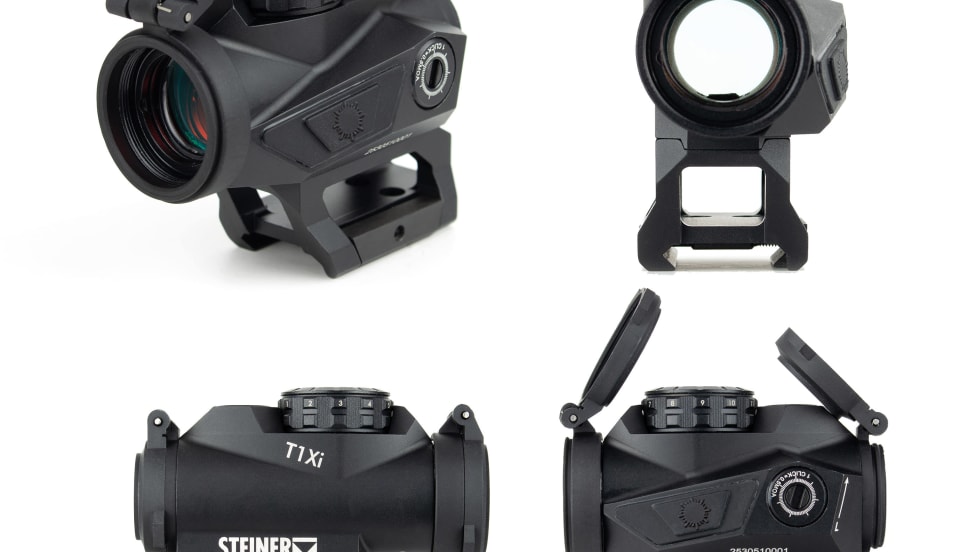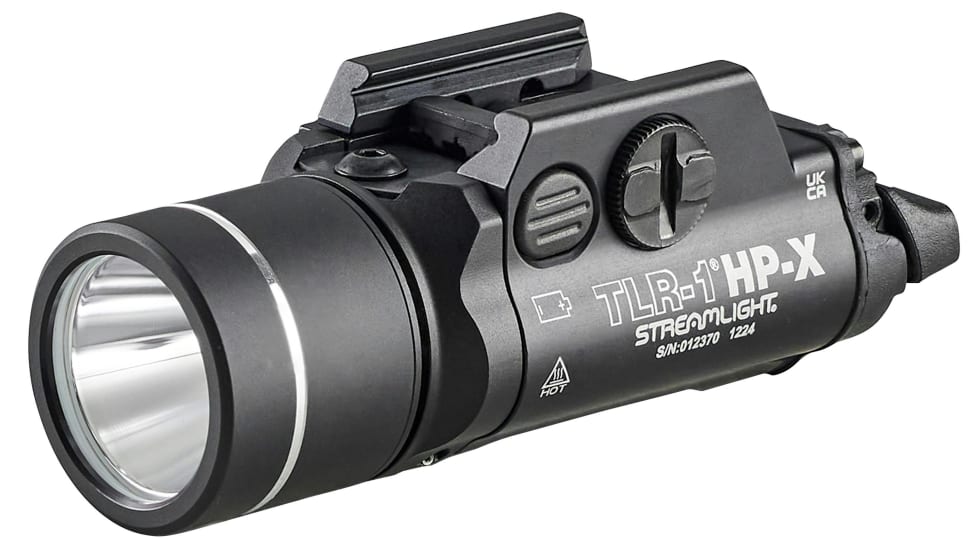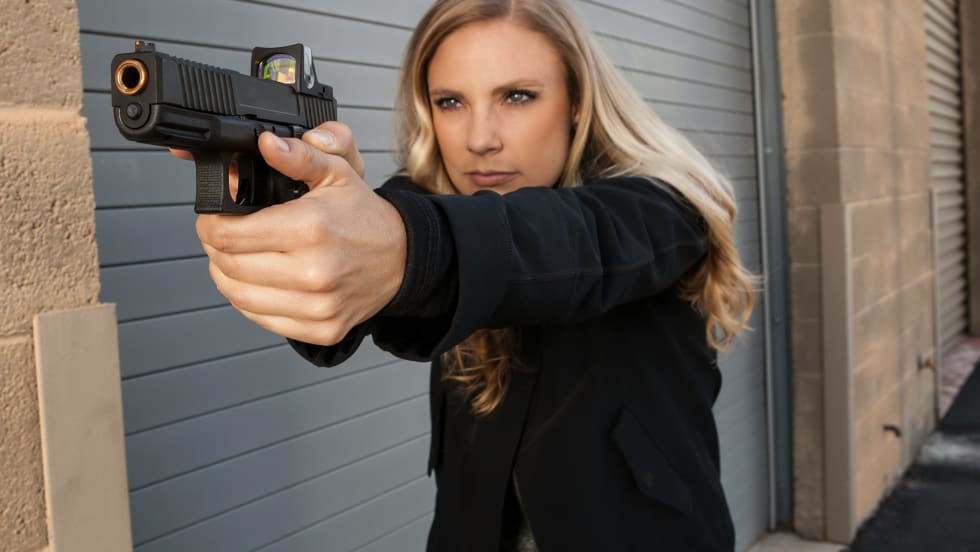The Stag 3G has a heavy, fluted 18-inch barrel with a one-in-eight twist. It also sports a Samson Evolution forearm, which is free floated. The trigger is a Geissele Super 3 Gun (S3G) model; the stock is a Magpul ACS; and the muzzle brake is Stag's 3G Comp.
Some AR enthusiasts will question why Stag is not using a one-in-seven twist barrel. After all, the military is moving to this rifling to help stabilize 77-grain bullets. I didn't have a good answer, so I did a bit of research. The reason is that the one-in-eight twist stabilizes the wide variety of bullet weights used in three-gun competition.
My range testing verified the 3G will shoot sub minute of angle with bullet weights from 55 grains to 77 grains at 100 yards. One reason for this rifle shooting as well as it does is the 18-inch Shaw stainless steel barrel. Shaw barrels are noted for their accuracy and performance, and the custom barrel in the 3G carries on that tradition.
Stag uses Samson's Evolution free-floated rail to ensure you have a solid grip. The forearm does not flex and touch the barrel, which would interfere with the barrel's harmonics to adversely affect accuracy. The Evolution forearm has a solid top rail to attach any number of items, and you can install small accessory rails to attach slings, lights, bipods, and other items.
Another reason the Stag 3G is so accurate is the Geissele Super 3G Trigger. This is a single-stage trigger that breaks cleanly at approximately three pounds. When I say breaks cleanly, there is hardly any take-up. When you think about making the 3G go bang, it does. Reset is quick and crisp, making it easy to achieve accurate follow-up shots.










